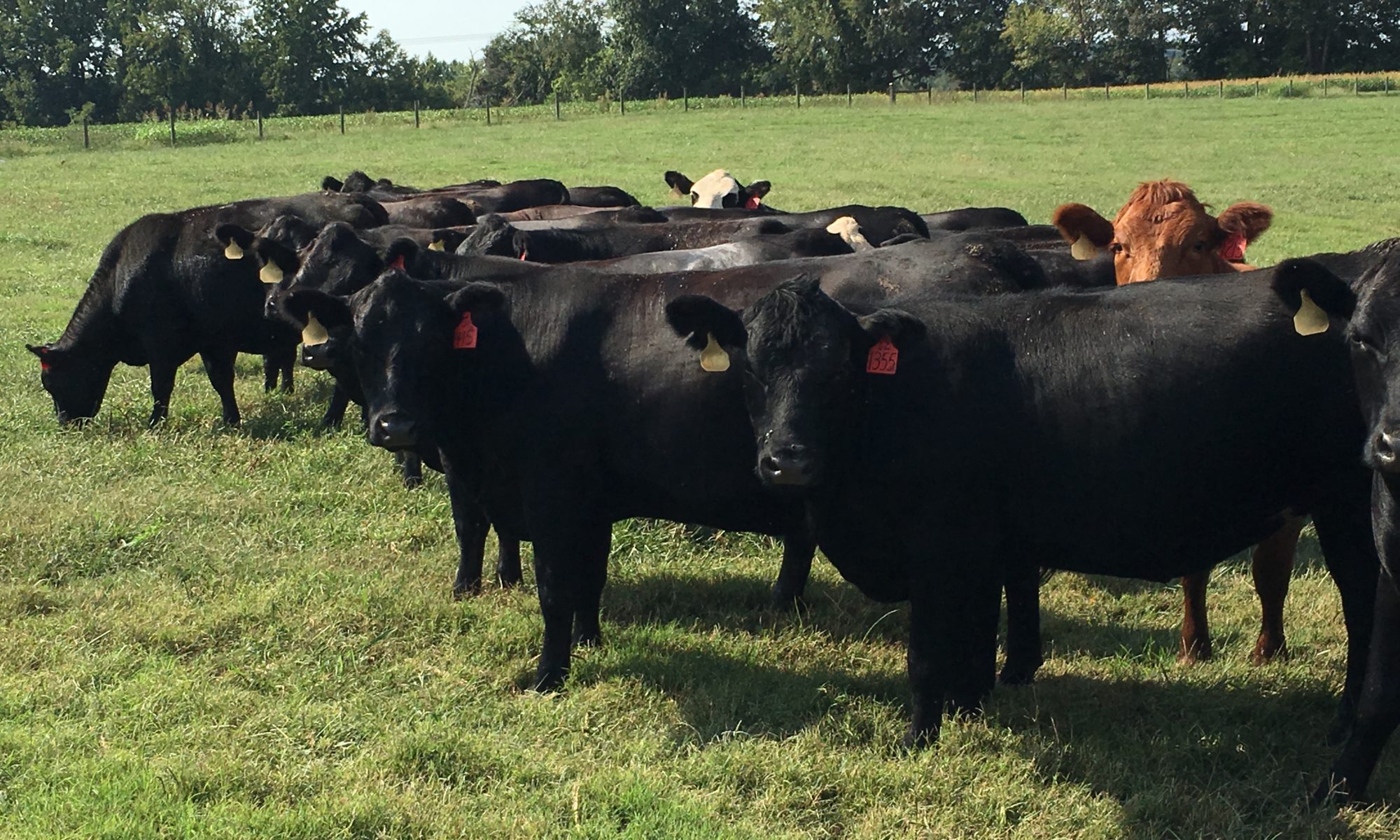

Dr. Andrew Griffith
Assistant Professor
Department of Agricultural and Resource Economics
P: 865-974-7480
Last months article talked about the importance of breeding females in the cattle herd and their effort 365 days per year. Given that these females are the production line for a cattle operation, it is important to select the correct females and know what they are worth when retaining or purchasing them. Thus, the focus of this article is knowing what they are worth when making the choice to retain a heifer and purchasing a heifer.
Research from the University of Tennessee evaluated determinants of bred heifer values a couple of years ago using data from the West Kentucky Bred Heifer Sale in Guthrie, Kentucky. This sale takes place in May and November. The heifers sold in May are fall calving heifers while the heifers sold in November are late winter and early spring calving heifers.
The results of the study showed that six-month bred heifers brought the highest value in the May sale with five-month, four-month, and three-month bred heifers being discounted $85, $134 and $159 per head, respectively. Thus, the highest valued females in the May sale where those calving the beginning of September. For the November sale, there was no difference in price for heifers five to seven months bred, but four-month bred heifers were discounted $54 per head relative to a seven-month bred heifer that is expected to calve in late January or early February.
A one dollar per hundredweight increase in weanling heifer price increased the value of bred heifers by $12 per head for the May sale and $11 per head for the November sale. This simply means bred heifer values increased as calf prices increased, which is expected. Another notable price determinant was lot size. At this particular sale, most lots contain two to five heifers. Lots with four or five heifers tend to bring the highest price per head while lots with three or less and those exceeding five heifers tended to bring lower prices. The larger lots could bring a lower price per head because some buyers do not want to purchase that many animals at once, which means it takes a few bidders out of the mix. The smaller lots may be discounted because buyers prefer to purchase more than two or three animals, and they would like to purchase heifers that will all calve about the same time. There is more that could be discussed on lot size, but we will stop here for brevity.
It is appropriate to have a good understanding of the factors influencing bred heifer prices, and this short article is not meant to outline everything influencing those prices. However, some folks may prefer an easier rule of thumb when attempting to come up with a value for bred heifers. Based on this research, a good rule of thumb for bred heifer values on a per head basis is 2.5 times the value of a 550-pound weanling heifer. In other words, if a 550-pound weanling heifer is worth $1,000 based on reported sales, then a five to six-month bred heifer will be valued close to $2,500 per head. This is not exact science as the value of the bred heifer may be somewhere between 2.3 to 2.8 times the value of a 550-pound weanling heifer. There will be variation given market conditions and animal characteristics, but this rule of thumb provides a good starting place when trying to determine the value of a bred heifer.
It is easy to see how this information is useful for producers who are buying and selling bred heifers. However, it is also useful to cattle producers retaining and breeding heifers to enter their herd. The decision to retain and breed a heifer to enter the herd is the same as making the decision to purchase that female at the same value she could be sold. Thus, producers who are considering retaining more heifers because of higher calf prices should understand the value at which these animals are entering the herd. The question is if there is more value in selling high valued bred heifers or retaining them. The answer to this question will not be known until it is too late to take advantage of the market opportunity.